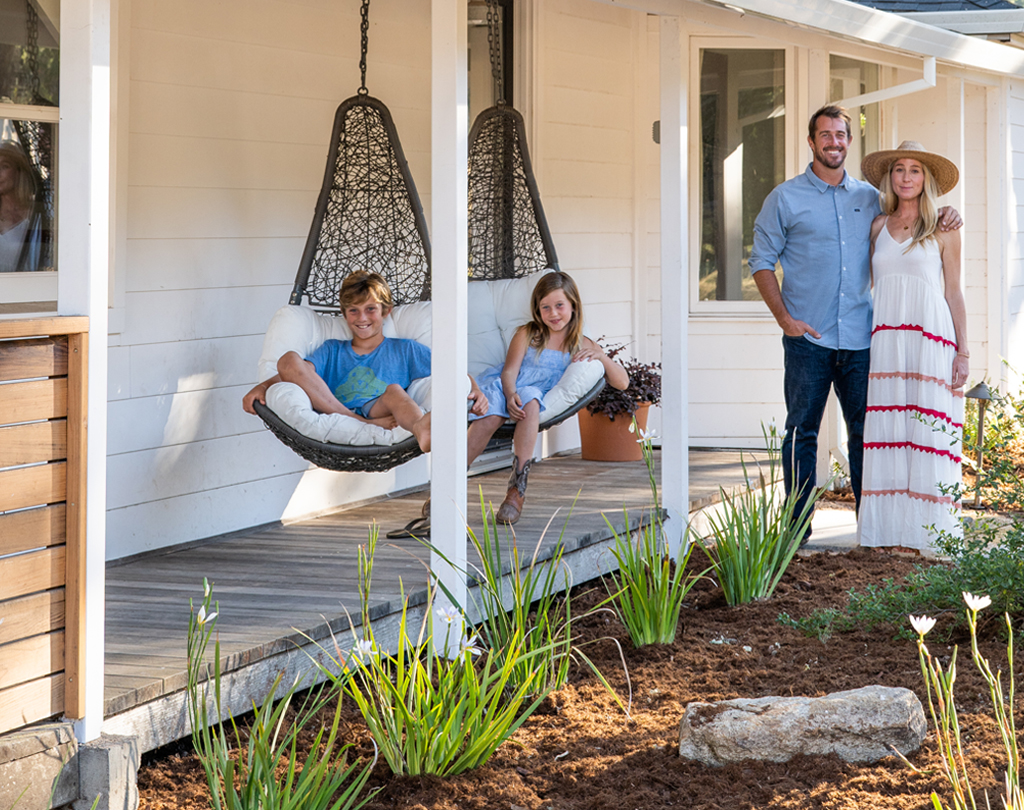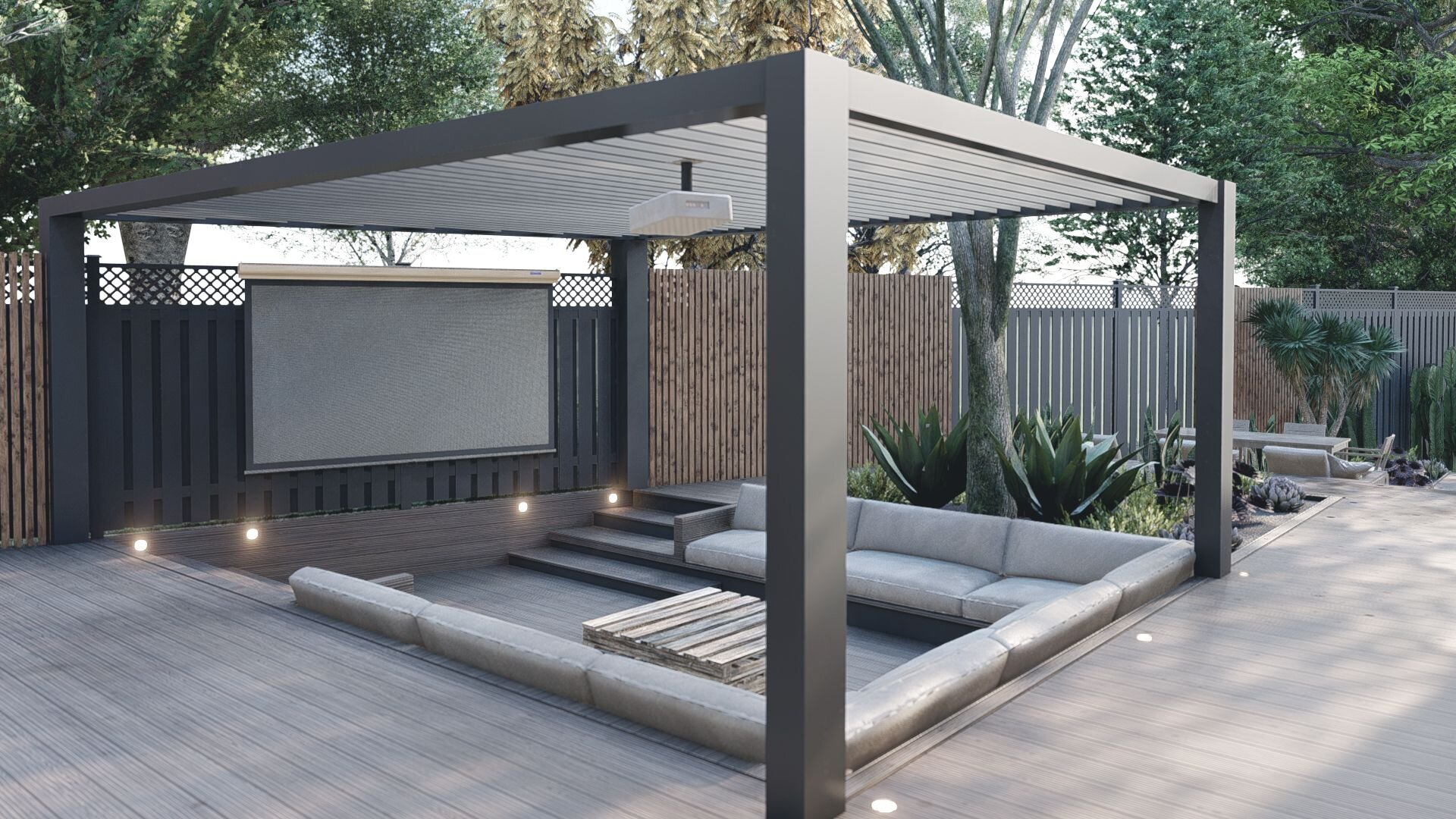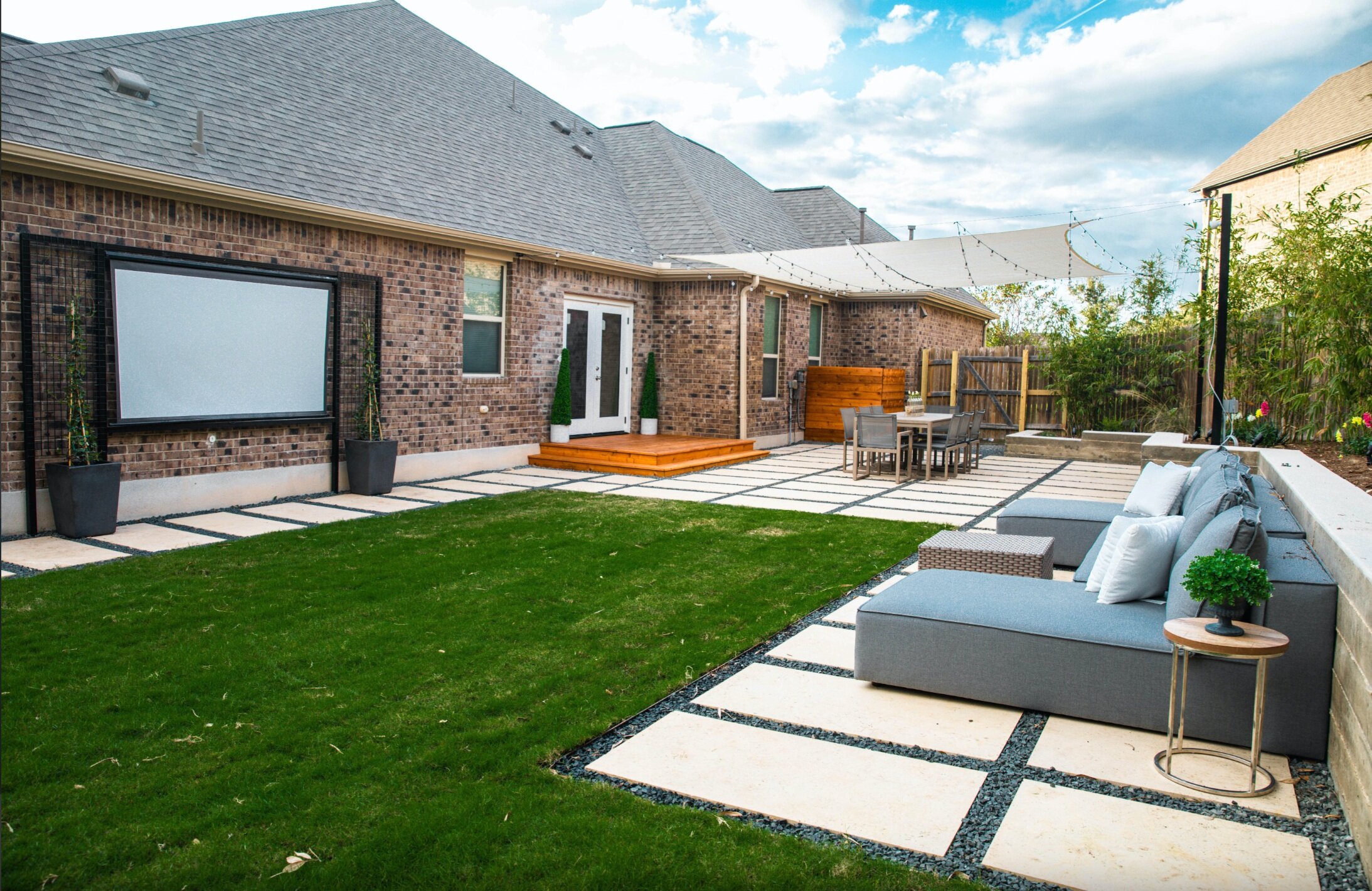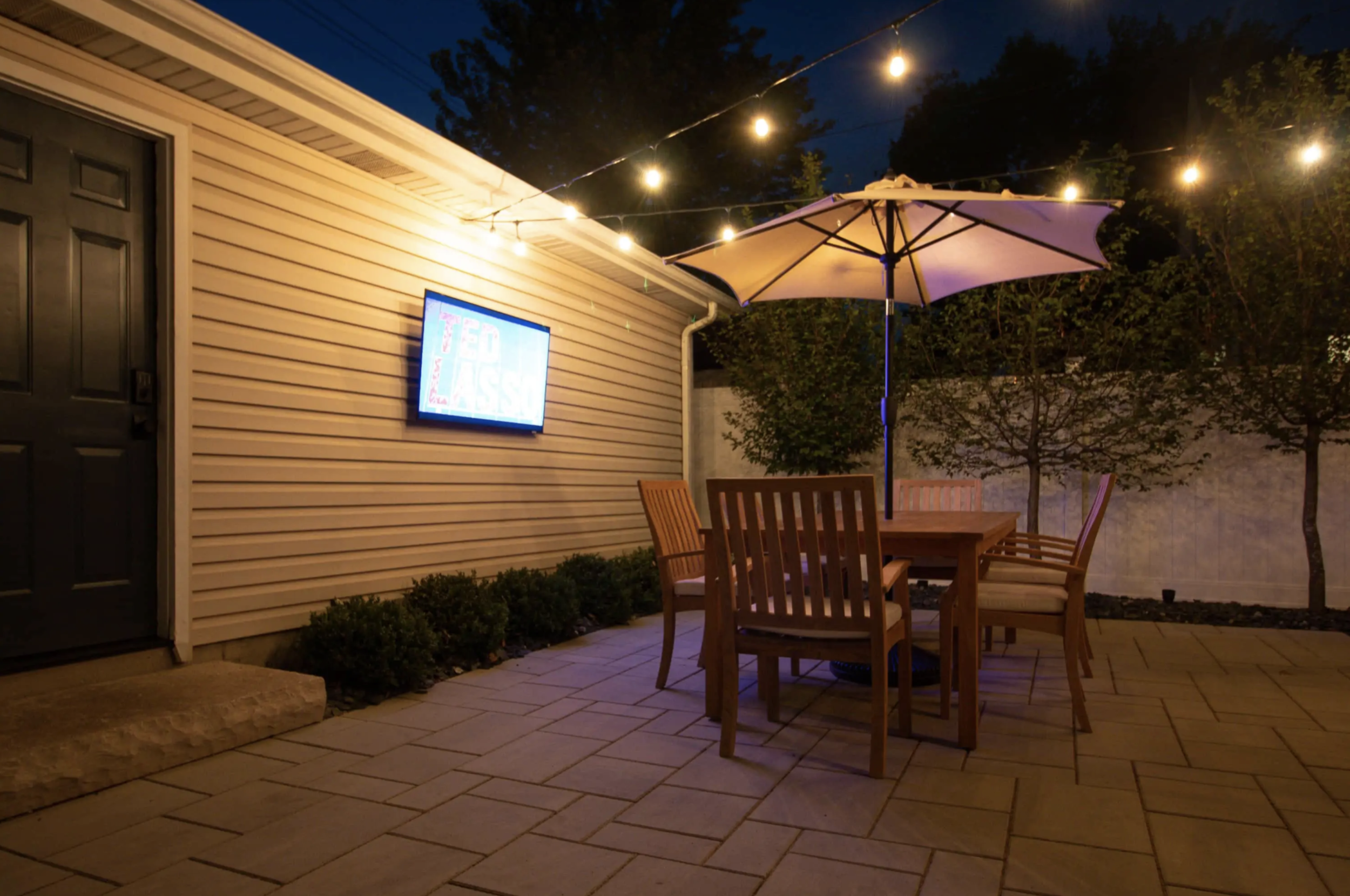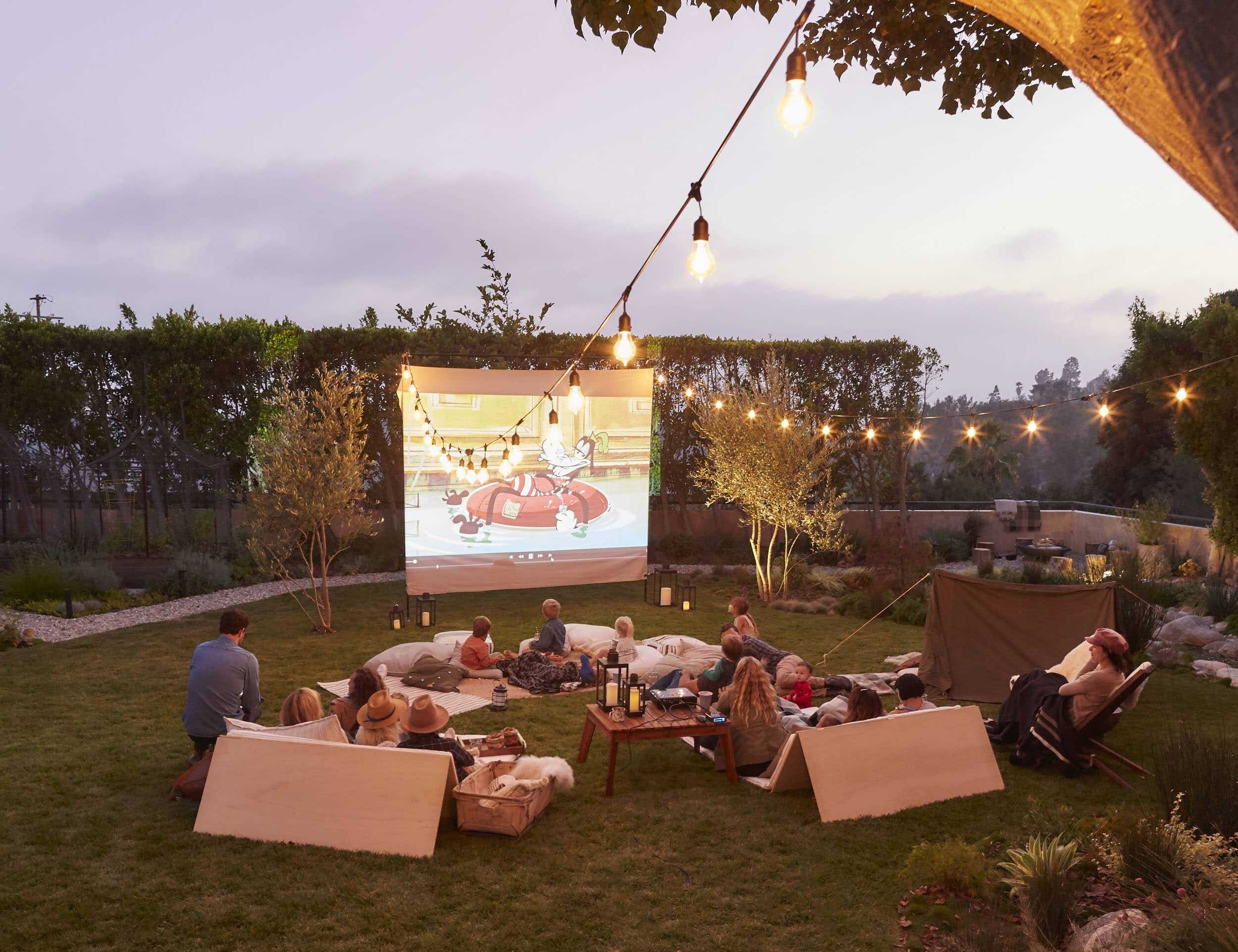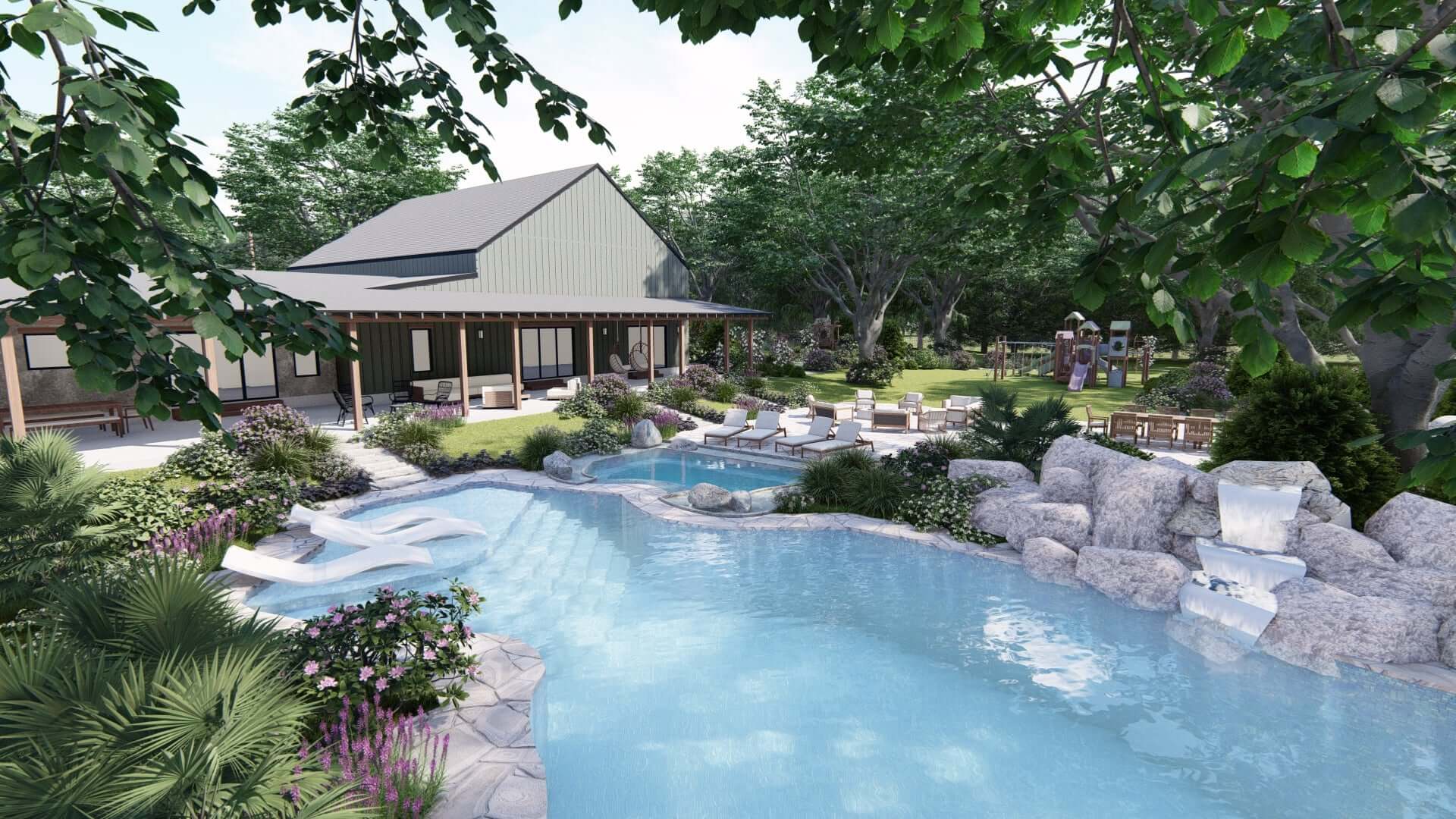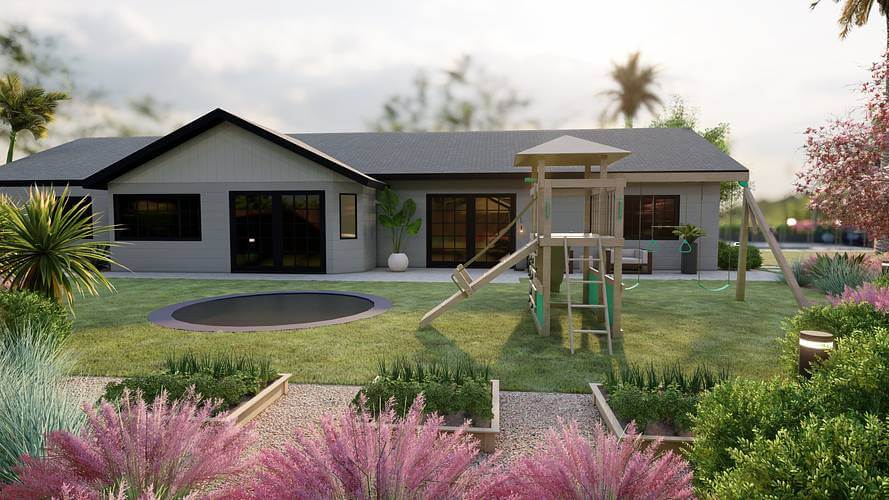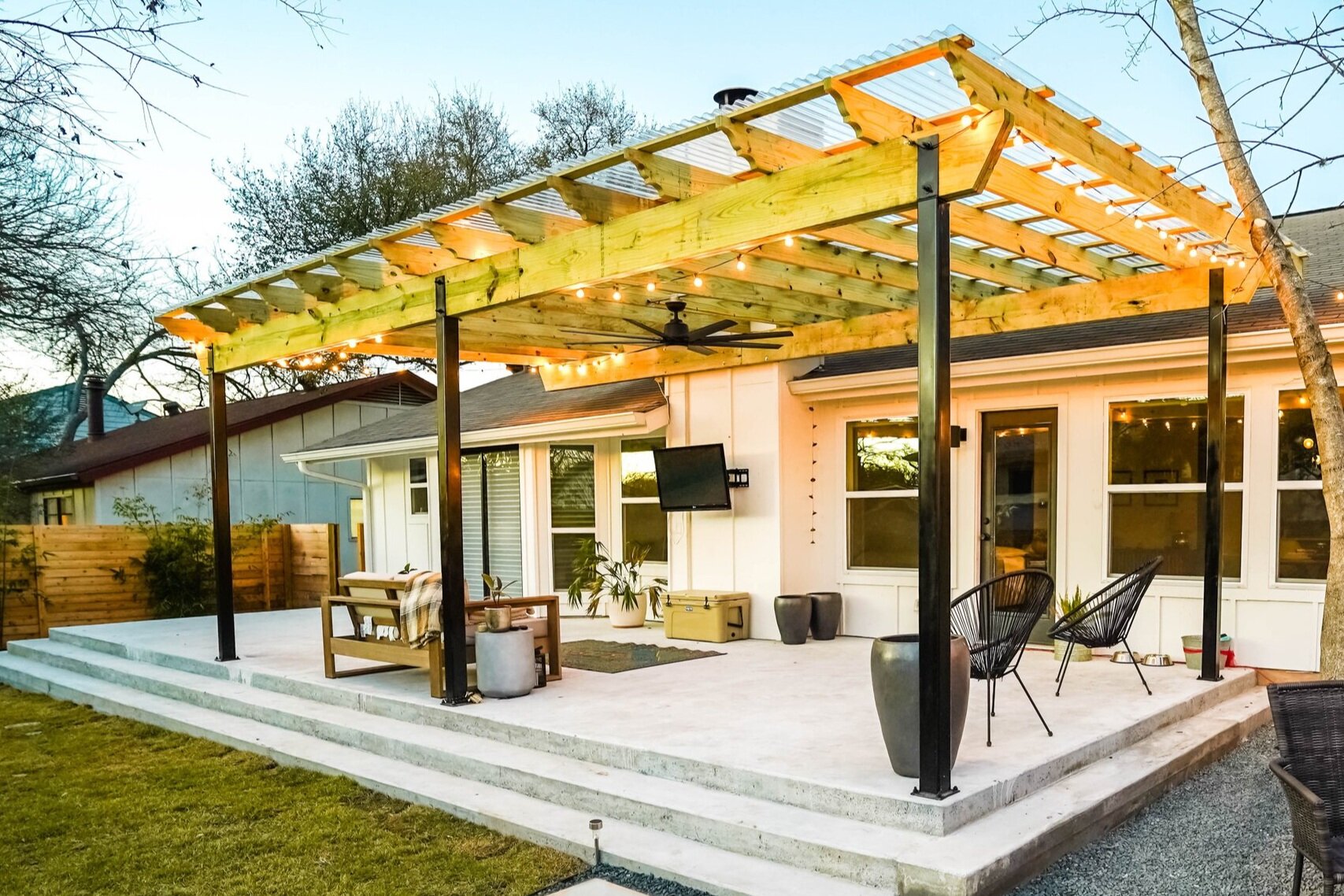
Backyard TV room in an Austin backyard. Installation by Yardzen Pros Cutters Landscaping.
After years of quarantine living, we’ve all grown increasingly open to taking traditionally sheltered activities outside. Watch the big game and movies outside? Yes, please.
There are lightweight ways to create an outdoor movie theater, and there are more permanent approaches. We’ll break down both and suggest a few key purchases to help you realize your al fresco viewing dreams.
LOCATION, LOCATION, LOCATION
First step, choose a space.
Intention
Are you looking for a one-night pop-up, a built-out entertainment zone, or something in between? Choose your level of investment – in terms of effort and dollars – and let that guide your choices.
Size
Just the fam, a small crew, or an outright party? You’ll need a space that will fit your group comfortably without going overboard.
Our advice: err on the small side – size your outdoor movie space for the family plus a couple pals. It’s ok to spill out the sides for the occasional large gathering, and we’d argue it’s more important to prioritize coziness for a movie date night.
Added bonus: keeping your theater space right-sized will preserve more of your yard for non-screen uses.
Convenience
Keep outdoor theaters close to indoor amenities like kitchens and bathrooms. It may be worth setting up across the yard if the backdrop is truly cinematic, but in general, we advise prioritizing convenience.
Wifi signal and electrical outlets are additional considerations that tend to keep outdoor theaters close to the home. A Wifi booster can solve spotty playback, but extension cables to power TVs and projectors are best avoided in any semi-permanent outdoor viewing setup (if it’s a casual one-night-only viewing party, extension cords are harmless, just don’t trip).
Ambient Noise
Indoor theaters are silent. Outdoor theaters won’t be, but try to find a relatively quiet spot. The more ambient noise you have to contend with, the more robust your speakers must be.
Turning up to drown out traffic or an AC unit can lead to angry neighbors pretty quickly – dodge that bullet by finding a quiet place to set up. If your theater is well-removed from neighboring homes, all the better.
Glare
Screens want to be in shade, so try to minimize incoming glare, be it from the sun or surrounding lights.
If you’ll be viewing during the day, avoid spaces that face south or west (especially west).
Shelter
A roof over your outdoor theater can be helpful, but it is far from mandatory. There’s something magical about watching a movie beneath the stars. Unless you plan to regularly watch in the rain, wet weather shouldn’t drive your theater design.
A Yardzen backyard in Houston with built-in couches around the projector
FURNISHINGS
With the location locked in, we turn to designing the theater itself.
Furniture
Whatever furniture you choose, it must be comfortable. Make sure backs are supported, nobody is sitting on a hard patch of floor, and there are opportunities (plural) to kick up your feet.
For a casual outdoor theater, pick up some easy to move, comfy furniture like floor cushions and low-slung chairs, and toss an outdoor rug on the ground to foster an outdoor living room feel. If appropriate, all these pieces can be removed when not in use – this is crucial when your theater has a functional day job like a play lawn or driveway.
Structures with mounted TVs generally merit nicer furniture – if you’ve built a custom wall with a recessed screen cavity, you’ll want furniture with equally rigorous design to complement it.
Regardless of style, opt for outdoor rated products, and try to choose pieces that facilitate multiple uses. You’ll get more bang for your buck and greater utility from your yard if your theater doubles as a cocktail, work, or quiet meditation zone.
Beyond comfort, you’ll want your outdoor theater to feel like your space. Get a feel for your exterior design style – we recommend browsing Yardzen’s project gallery – and let that guide your choices of furniture, light fixtures, paint, and other decorative features throughout the theater space.
Lighting
Light your outdoor theater just enough for comfortable use, and no more. Low-output LED lanterns, string lights, even tiki torches or candles are all simple, viable options. Light selection is a great styling opportunity – have fun with it.
To manage glare, keep lights below and directed away from the screen to minimize glare. String lights should stay relatively dim and distant from the screen.
Outdoor Comfort
The principles of designing a yard for cold weather use apply to outdoor theater design. (Read the article about Cool-Season Landscaping and Creating a Cozy Yard). You’ll be outside at night, so staying warm will be critical to comfort.
For a lightweight solution, dress in layers, and keep some blankets around.
If you have an overhead structure available, you can go a step further by mounting infrared heaters.
What about mosquitoes? If you need to use bug repellant, we suggest topical skin spray or cream. Avoid spraying your plants with repellant – this kills other insects that birds would rather keep around for dinner.
Backyard TV room in an Austin backyard. Installation by Yardzen Pros Cutters Landscaping.
THE SCREEN
Your space is ready, now what do we watch?
Screen Size
Personal preference guides this decision, but we advise choosing a screen suitable to the space: large screens for large spaces, smaller screens for tighter areas. The same rule applies when setting the size of your projection.
We suggest maintaining a decent margin of wall material around a screen’s edges – it frames the picture and looks more intentional.
Projector Screens
If you opt for a projector, you have a few screen options.
The easiest approach is to pick a blank wall and project directly on it. This is not without complications. Wall textures introduce shadows into projections (you want a smooth wall), while wall color and paint finish affect image color and sharpness.
If you plan on consistent viewing, you can paint a wall with special screen paints, though acrylic and latex paints are a reasonable and more affordable next-best option. (Projectortop has a useful breakdown of paint types for projection walls.)
If you don’t have a great wall and don’t want to bother painting, just hang a smooth white sheet – this works great as a temporary solution, just take care to hang it as tightly as possible to minimize wind rippling.
If image quality is a priority, you’ll want a proper screen. We prefer screens with low profile metal stands like the Elite Screens Yard Master Plus, which can be stored when not in use, and occupy a minimal footprint when assembled.
Retractable screens skip the setup of portable screens, but require a well-positioned beam to hang from. Minimalist wood frames are a fun solution – use them as cheeky viewfinders to literally frame key views in your yard when the screen is retracted.
Outdoor dining room and TV room for DIY Playbook in her Yardzen yard!
THE DEVICE
Indoor TV
For the infrequent, casual viewer, you can simply drag an indoor TV outside for the night. This approach is homespun, but cost-effective and fun (kids love moving the inside outside).
If you plan frequent outdoor movie nights, build a weatherproof TV cabinet. Our advice to regular viewers: invest in a projector or outdoor TV to avoid hassle and equipment damage.
Projector
Projectors are portable, take up minimal space, and offer huge screen sizes – up to 150” – with solid image quality. They also make it simple to experiment with different theater zones around your property.
Many decent projectors are more affordable than outdoor TVs – we recommend the New York Times summary of cost effective, high quality options.
Keep in mind, to get large screen sizes you will need 10’ between projector and screen. For smaller spaces, opt for a projector with a short throw lens – these only need 5’ to project a 100” image.
Outdoor TV
For optimum image quality, outdoor TVs can’t be beat.
Weatherproof and built to endure the elements, they hang permanently in your outdoor theater – no setup required, just sit down and enjoy.
Because they are permanently mounted, TVs lack the flexibility of projectors, so take extra care when determining how and where to mount your TV.
Pro tip: invest in an outdoor rated TV mount and cables as well. Indoor components will rust.
What TV should you get? Popular Mechanics has an excellent guide to answer that question.
Speakers
TVs and projectors typically come with decent built-in speakers, but sometimes you need a boost.
Every projector and TV should have an analog speaker connection, and most offer bluetooth as well. While wireless bluetooth speakers avoid tangled cables, their playback can lag behind the image on the screen. If you have bluetooth speakers already, test them out, and backpedal to analog speakers if delays become an issue.
Backyard movie night with Emily Henderson
BE OUTDOORS
A final and crucial tip for outdoor theaters: enjoy them for being outdoors. Quiet spaces are already available to us indoors if you need a truly focused viewing environment.
Our advice: take advantage of the outdoors to create a viewing space that adds style, function, and perhaps a little whimsy to your yard. Outdoor theaters should integrate the joy of being outside with the pleasure of a night at the movies. Cricket sounds and breezes are part of the point.
Happy viewing!
Featured Articles
How an Interior Designer Created “Outdoor Rooms” in Her Yardzen Yard

The Best Outdoor Cold Plunge Tubs & Ice Baths in 2024 (Chosen by Our Client...

Our Dreamiest Plunge Pool Yard Designs
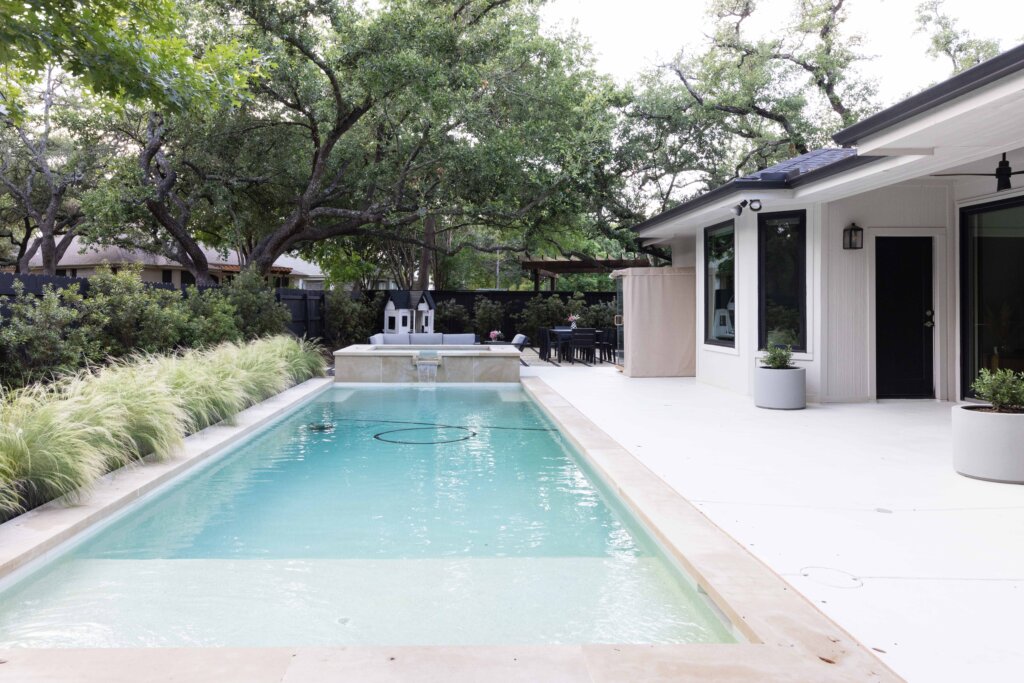
Our Favorite No-Grass Front Yard Ideas

